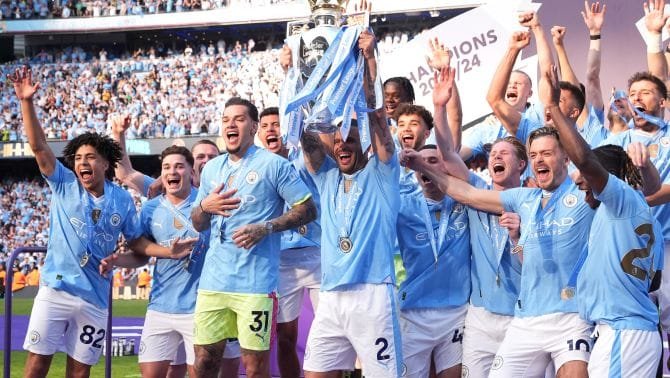Have you ever wondered what makes fans and analysts constantly debate about Vinicius Jr vs Kylian Mbappé? Is it their lightning pace, dazzling dribbling, or the way they decide matches with individual brilliance? This question has fueled football discussions across continents, from living rooms to sports studios, as fans try to settle the debate once and for all
But is speed alone enough to crown the fastest winger, or should we dive deeper into their dribble success rate and goal contributions? When Real Madrid supporters compare their wingers, Mbappé’s explosive acceleration and Vinicius’ silky dribbling are always at the heart of the conversation. Both players have unique styles, yet their roles often overlap, sparking an endless rivalry among football fans
So, who truly leads the race in football’s modern era? This comparison isn’t just about numbers—it’s about analyzing their artistry on the pitch, understanding the physics behind their movements, and exploring how these stars influence their teams. By the end of this article, you’ll have a clearer picture of how Vinicius and Mbappé stack up side by side in the battle for supremacy.

Speed as a Defining Weapon
The Need for Pace in Modern Football
In today’s high-intensity matches, speed is more than just raw sprinting. It’s about the timing of runs, acceleration, and maintaining top speed under pressure. Both Vinicius and Mbappé excel in this aspect, but their approaches differ
Who is Faster?
Mbappé has recorded a top speed of 37.9 km/h, ranking him among the fastest in world football
Vinicius Jr follows closely with a top speed of 36.5 km/h, which often helps him create separation from defenders
Their explosive acceleration is equally impressive, with Mbappé using direct sprints to stretch defenses, while Vinicius prefers shorter bursts combined with skillful dribbles
Speed in Context
Speed isn’t measured in isolation. According to sports science insights, body mechanics and acceleration patterns influence how effective a player’s sprint is in real-game situations. This highlights why Mbappé looks unstoppable in counterattacks, whereas Vinicius shines in tight spaces
Dribbling as an Art Form
Vinicius Jr: The Samba Dribbler
Known for his flair, Vinicius Jr brings Brazilian street football energy to La Liga. His dribble success rate averages around 55–60%, showing his ability to beat defenders in one-on-one duels
Kylian Mbappé: The Efficient Runner
Mbappé’s dribbling is more direct, averaging 50–55% success rate, but his efficiency comes from combining dribbles with blistering runs behind defenders
La Liga and Champions League Data
In La Liga rising stars analysis, Vinicius often appears among the top three in completed dribbles. Meanwhile, Mbappé dominates Champions League dribbling charts due to PSG’s and now Madrid’s counterattacking style
Goal Contributions Beyond Speed and Dribbling
Direct Impact on Matches
Mbappé consistently delivers 25–35 goals per season, alongside 8–10 assists
Vinicius Jr contributes 12–18 goals with a similar number of assists
Influence on Real Madrid’s Attack
Both are Real Madrid wingers, but their tactical roles differ
Mbappé operates as a hybrid striker-winger
Vinicius works as a traditional left winger, creating width and chances
Statistical Comparison Table
| Metric | Vinicius Jr | Kylian Mbappé |
|---|---|---|
| Top Speed | 36.5 km/h | 37.9 km/h |
| Dribble Success | ~58% | ~53% |
| Goals (per season avg) | 15 | 30 |
| Assists (per season avg) | 12 | 9 |
| Role | Left Winger | Striker/Winger |
The Physics of Football Performance
Modern football is not only about talent but also about biomechanics. Scientific studies show that acceleration, deceleration, and energy conservation define a player’s efficiency, Mbappé uses explosive mechanics for counterattacks, while Vinicius leverages balance and agility for short-space dribbles. Additional insights into biomechanics in football confirm that energy efficiency and sprint mechanics explain their unique playing styles
Legacy and Global Influence
While Mbappé is already seen as a Ballon d’Or contender with multiple World Cup appearances, Vinicius has become the face of Real Madrid’s post-Benzema era. Their rivalry echoes classic debates in football history, similar to Messi vs Ronaldo. You can also explore more about Kylian Mbappé and his career trajectory.

FAQs
Q1: Who is faster, Vinicius Jr or Kylian Mbappé?
Mbappé is slightly faster, reaching 37.9 km/h, while Vinicius tops at 36.5 km/h
Q2: Who has a better dribble success rate?
Vinicius leads with around 58%, compared to Mbappé’s 53%
Q3: Who contributes more goals?
Mbappé contributes more goals per season, averaging 30 compared to Vinicius’ 15
Q4: Do they play the same role in Real Madrid?
No, Mbappé often plays as a striker-winger, while Vinicius is a traditional winger
Q5: Which player has a brighter future?
Both have exceptional futures, but Mbappé’s current goal output gives him a slight edge, while Vinicius is improving rapidly
Conclusion
The debate about Vinicius Jr vs Kylian Mbappé will continue for years. Mbappé may be the faster and more clinical scorer, but Vinicius embodies artistry and creativity. Together, they form one of the most dangerous winger partnerships football has ever seen, shaping Real Madrid’s dominance in modern football.
For readers seeking deeper insights into young talents shaping the game, check out this detailed feature on rising stars. For a broader perspective on football’s top players, explore this overview of the best footballers.










